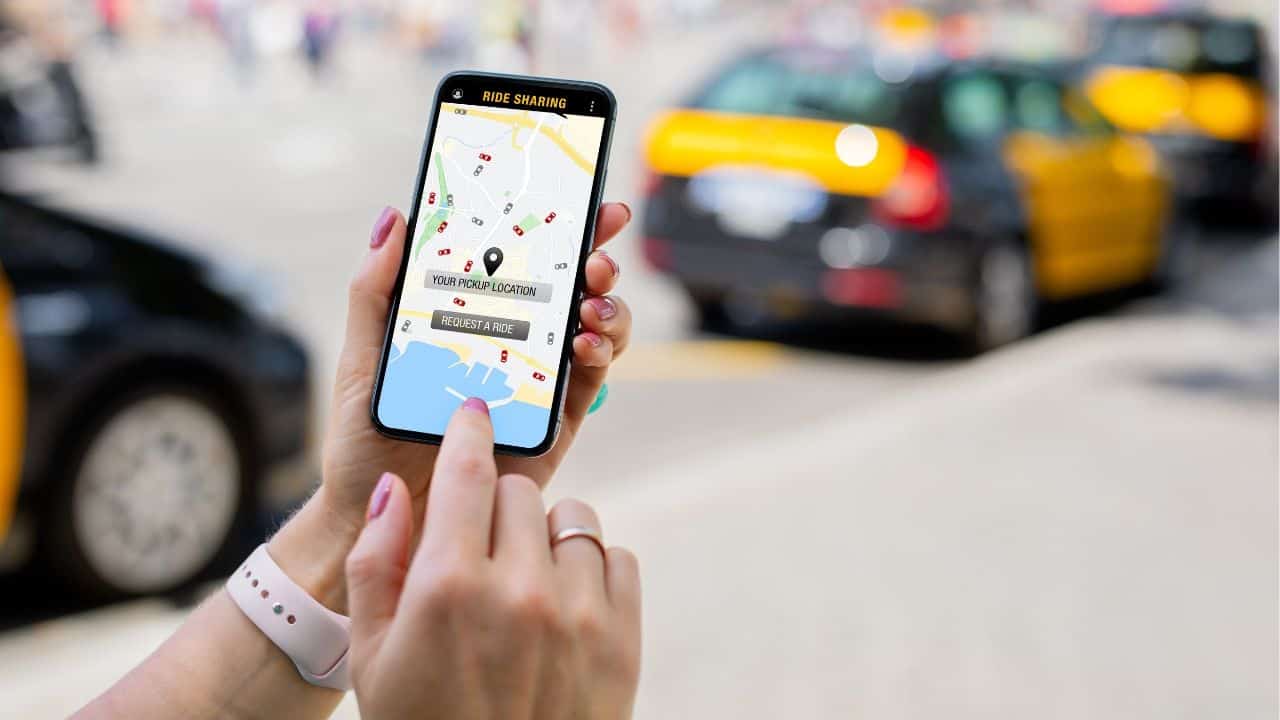The sharing economy splashed onto the scene after the financial recession of 2008 and the emergence of new technologies to facilitate it.
Today, the conversation around the sharing economy has dwindled somewhat, but it’s more important now than ever to assess it in tandem with the climate crisis—especially given a sharing economy and sustainability are closely interlinked.
While a decade ago, pundits, critics, and enthusiasts alike wrote tomes on the warnings and potentials of a sharing economy, today it’s a standing feature of our modern world. Many youngsters can’t even recall a world that existed before Uber dropped them off, they finished listening to the latest audiobook from their favorite author on Audible, or an Airbnb awaited their vacation arrival.
The last ten years or so showed us both the rise—the excitement, the potential, the disruption—of the sharing economy along with the fall—the problems with transparency, lack of governance, regulation, safety, and worker’s rights.
But what is the sharing economy exactly, and how can sharing economy sustainability provide much-needed solutions to the escalating environmental, social, and economic problems threatening the world?
Exploring Sustainability In The Sharing Economy
1. What Is The Sharing Economy?
In short, a sharing economy is collaborative consumption spurred by the digital age.
It’s a contemporary economic model most often delineated as peer-to-peer sharing of access to goods and services, which is achieved via a community-centered online platform.
Essentially, through the internet, people can find people who require various assets and share usage. Sustainability and efficiency are often the focus of the sharing economy, because of the way it facilitates the sharing of underutilized assets.
To give a sense of how robust the sharing economy has grown in the last decade, PricewaterhouseCooper (PWC), one of the one of the largest professional services networks in the world and a significant player in the sharing economy as a provider of expertise and advisory service, valued their revenue in it at $15 billion in 2013. By 2025, they estimate that number to be $335 billion.
The innovations stemming from the sharing economy are exciting, but they’ve inevitably ruffled feathers by upending traditional economic models. Especially when it comes to workers rights, regulation, and data, there have been huge questions posed and challenges faced with legislation.
While the very notion of sharing things is largely agreed to be a more sustainable way of life, research finds that shared products are often quickly disposed of, replaced or re-sold.
Is the sharing economy unsustainable after all?
Or are the dismissed or spurned sustainability opportunities in a sharing economy simply a lingering symptom of the problematic traditional consumption model a sharing economy theoretically seeks to upend?
Let’s take a look at the sharing economy ten-plus-years after it burst onto the scene to see if its sustainability really does help the everyday consumer make a more positive impact on the planet.
2. How Does The Sharing Economy Work?
Sharing economy has become an umbrella term, one which encompasses not only file sharing or open source software, but also peer-to-peer lending, bitcoin, and other forms of blockchain and sustainable smart technology.
It’s as if the eons-old barter economy, in which goods are exchanged, has been revitalized by technology, as people barter their personal data for services from Silicon giants like Facebook or Google.
But bartering is only one facet of the sharing economy; money is exchanged, too… and lots of it.
For young people today, the sharing economy is attractive because it is centered around access over ownership. Having matured in a time of tremendous economic upheaval and record inflation—meaning fewer ownership opportunities—youth today value experiences over owning things, and these apps and services support this by allowing people access without ever having to own. All at a fraction of its cost.
Businesses stemming from this ethos continue to boom as new activities and platforms launch online without relent. On top of that, new technology, big data, massive storage capacity and more sophisticated coding have led to all kinds of new business models. New apps and subscription services for borrowing, lending, or sharing emerge almost daily.
As far as sustainability in the sharing economy goes, the thinking is that these services allow people to share and consume more, while actually buying less, thereby contributing to a sustainable lifestyle that will generate less waste and resource depletion without outright sacrificing the enjoyment of things like movies, books, cars, and much more.
There are a variety of different types of sharing economy platforms. Here are today’s most popular sharing economy types:
- Transportation: We’ve all heard of Uber and Lyft. Rideshare platforms connect people who need a ride with someone who will take them there. Even better for the environment are the now very popular bikeshare programs in sustainable smart cities and more.
- Media: Kindle, Netflix, Hulu, Audible, Spotify, Apple Music, and so many more platforms provide users with a near infinite library of movies, television shows, e-books, comics, audiobooks, podcasts, and songs for a minimal monthly fee, instead of the thousands of dollars (and e-waste and paper waste) it would require to purchase all the individual programs people consume on a near daily basis.
- Short-term apartment rental: Temporary accommodations when people travel are offered through platforms like Airbnb. There are also platforms for couchsurfing, renting campsites, and more.
- Fashion sharing: Selling used clothing or renting out clothing is increasingly popular among young people today. Given what a poor track record the fashion industry has for CO2 emissions, the hope here is that it will lessen the impact of the currently unsustainable fashion industry.
- Peer-to-peer lending: This platform lets you borrow or lend money without a conventional bank. The platform is an intermediary between borrowers and lenders. A number of platforms provide day-to-day loans, which aren’t available at standard sustainable banks.
- Crowdfunding: People who need money for a project, idea, start-up or service are connected with people who will fund it. Entrepreneurs will often sell a product or offer a share in return.
- Freelancing Platform: Taking the labor market online, people either offer freelance work or are looking for it. Work ranges from writing articles and art and illustration, to virtual assistants, data entry and computer programming.
- Coworking: These are platforms that let users access a shared physical space for working. The overhead of utilities, storage, office rent, and office supplies are shared with other working professionals, which saves money and pools resources more efficiently and sustainably.
What About The Gig Economy?
The sharing economy is often confused with the gig economy, and it’s worth distinguishing the two.
The gig economy directly refers to changing modes of employment nowadays, where project-based work and part-time “gigs” are a fast-growing phenomenon.
While in a traditional job, a company would hire a full-time workforce for an office, in the gig economy, the idea is that a person can work anywhere at any time.
Meanwhile, the sharing economy directly refers to the sharing of goods or services. There are a number of sharing economy business models that have given rise to the gig economy because companies do not hire full-time workers.
In the case of a freelancing platform, for example, service users offer several projects to certain individuals. After the project and payments are completed, the contract between the worker and the service user ends. In this way, the freelancing platform has incorporated both the sharing economy and the gig economy.
3. Has The Sharing Economy Helped Sustainability?
The sharing economy has dramatically disrupted our culture and our economy in the last decade.
One of its initial lures, via apps like Uber or Airbnb, was that peer-to-peer sharing is the way forward to a more sustainable future.
The thinking was that these services allow people to share more and buy less, thereby contributing to a sustainable lifestyle that will generate less waste while giving a positive consumer experience. After all, it’s only natural to assume that the sharing economy is good for the environment because it puts under-utilized assets to use.
This is why the sharing economy has often been used as an example of how we can embrace sustainable consumption without it restricting economic growth.
But has the sharing economy really helped sustainability? How green is collaborative consumption?
Needless to say, quantifying its green impact is a challenge. Evidence-based research is hard to come by, and media reports about the sharing economy tend to follow whatever the public opinion is at the moment around the sharing economy, i.e. mercurial at even the best of times.
It also doesn’t help that most big tech companies who own these platforms remain tight-lipped about data and statistics pertaining to sustainability.
For example, Waze, a crowdsourced navigation app that helps drivers avoid traffic used to publish its data, so that analysts could understand better how its ability to divert traffic was saving on CO2 emissions. That all changed, unfortunately, once Google bought the app. No data about the Waze app is now accessible.
The same goes for Airbnb, who have repeatedly refused to provide hard data for researchers looking at the actual green impact of the travel industry-disrupting app.
Airbnb also brings up an interesting question over the social sustainability of the sharing economy, due to the fact that Airbnb’s easy profit potential is actually leading to more consumption by the wealthy as they purchase second (and beyond) homes purely for the intention of “Airbnb-ing” them out for profit. This feeds housing scarcity and drives up market prices for both buyers and renters.
Zipcar was inconclusive, with researchers unable to agree how many cars it takes off the road, or any.
For apps like Couchsurfing, it was likewise impossible to confirm how environmentally friendly it truly is—though it’s likely an improvement on wasteful hotel alternatives. Research concluded it “will probably reduce waste and environmental degradation”, though no specific metrics or measurements are given to support such a conclusion.
Moreover, while sharing things is largely agreed to be a more sustainable way of life, research indicates that shared products are often quickly disposed of, replaced or re-sold, which goes in direct opposition to sustainability.
A behavioral economics study by ING demonstrated that people are actually more likely to discard shared or lent out items quicker as they are perceived as quickly “worn” or “dirty”. In this way, it’s difficult to make the argument that the sharing economy reduces our need for manufacturing and consuming more stuff.
That said, the benefits of the sharing economy still lie in its potential to provide a greener future for us all; the need is for better policy making and regulation by governments worldwide to ensure that humans and the environment really get to benefit from collaborative consumption.
To have actual thriving lowered carbon economies, governments will need to step up and mandate transparency of data, for example, so that evidence-based policymaking around sustainability can be ensured.
In time, the hope is that the sharing economy can help foster systemic and structural change for a more sustainable world. For now, the only positive we can truly muster is that there is a huge deal of room available for optimization strategies. Until then, the tech companies behind these platforms mostly get to run the show.
The ISO’s New Standard
One step in a greener direction is the advent of the International Organization for Standardization’s (ISO) new standard for the sharing economy.
Most known in sustainability spaces for their ISO 9001 and ISO 14001 sustainability and quality assurance manufacturing certifications, the global standards giant recently developed a new standard that sharing economy businesses can apply for to become accredited.
It’s called the ISO 42500, Sharing economy, and it involves general principles, which provide guidance to ensure safe and trustworthy transactions and encourages optimal resource use.
The ISO organization believes it can also help support environmental objectives.
Dr Kernagh Webb of the ISO group said, “The sharing economy has the potential to truly transform our world, reducing overconsumption and even creating communities. Its growth depends on there being a solid base of trust built through transparency and accountability. ISO 42500 was developed with this in mind.”
The standard hopes to help with such criticisms of the sharing economy as products or services not meeting environmental, social and other expectations, the lack of user privacy safeguards, data protection breaches and the absence of clear procedures for filing complaints.
In tandem with government actors taking charge to properly regulate the sharing economy, the ISO standard holds great potential.
4. Examples Of Sharing Economy Sustainability
The sustainability of the sharing economy really depends on the platform itself, and as with anything, size and success often come at a detriment to sustainability.
That said, here is a sample of more or lesser known sharing economy platforms and look at the pros (or cons) of their effect upon sustainability and environmental concerns.
BIXI:
Bicycle sharing schemes are one of the most favored in sustainability circles, because they can reduce the use of motorized vehicles that usually consume petroleum products and generate emissions.
Montreal’s BIXI is a popular bikeshare program in North America. The program offers more than 10,000 bikes around the city that can be accessed through the app, which is tied to your smartphone and credit card.
WeWork:
Coworking is largely seen as a step toward a more flexible, affordable, and environmentally-friendly lifestyle. The same way that 40 people on a bus removes 40 cars from the road, 40 people in a shared coworking space reduces the amount of utilities and carbon footprint if they were working in 40 separate offices.
WeWork is one of the most popular coworking platforms, available in 235 locations.
Tentrr:
Like an Airbnb for camping, Tentrr connects campers with rural landowners, who provide a private space and camping equipment. Compared to staying in a hotel, Tentrr says it slashes water use and CO2 output, although evidence is needed.
Tentrr also helps to preserve undeveloped land and fosters environmental stewardship.
BlaBlaCar:
BlaBlaCar takes Uber or Lyft one sustainable step closer to being green by offering rides along routes pre-determined by the driver. It cuts fuel costs and is great for long distances, and is usually between 50% to 90% cheaper than a train—unlike Uber’s high rates.
Zipcar:
Offers cars around participating cities that can be unlocked and used like a car rental service. The hope is that fewer cars are being bought and put on the streets in cities thanks to how easy and accessible their service is.
By using Zipcar, they claim members cut their carbon footprint by up to 1,600 lbs. per year and save about $784/month on average compared to car owners. Third party researchers have been unable to agree on evidence-based findings.
Olio:
Sustainable food brands creating sharing apps are one of the most innovative in a new wave of peer-to-peer apps. Through Olio, restaurants sell or share their leftovers to those in need, neighbors can offer food to others for free, and volunteers can deliver meals to people in need. It sounds like a brilliant way to help while also reducing food waste, which is a huge contributor of greenhouse gasses.
That said, research finds that money saved from food sharing apps tends to cancel out any sustainability achieved.
Pool:
Pool is one of many new fashion rental app services available, currently only available in Germany. If we want to address both the climate crisis and fashion’s long-standing sustainability problem in a meaningful way, then apps like Pool, a service renting out high-end fashion, might help do just that.
These fashion rental apps stand in stark opposition to the mainstream fashion philosophy pushing exclusive ownership and rapid obsolescence, and instead sustainability, longevity, and locality are in style.
Vinted:
Secondhand selling has never been so popular as it is today, thanks to apps like Vinted that help everyday people sell their wares.
According to Vinted, it aims “to make secondhand clothing the best and easiest choice.” In this way, Vinted is a sure “win” for sustainability.
Workaway:
Workaway is an interesting service because it is one of the few that operates on a real barter system. In exchange for working a set number of hours per day (usually around five) in all manner of industries (from hospitality to farming), volunteers are provided with food and accommodation.
On the current backpacker tracks around the world, this is becoming an especially popular, sustainable and affordable way to travel. User profiles and rating systems seem to effectively ensure transparency and safety.
5. Benefits & Costs Of The Sharing Economy
To summarize what we’ve learned of the sharing economy, here’s a cheat-sheet of the benefits and costs of the sharing economy.
First, what are the benefits of a sharing economy?
- Monetization of underutilized assets
- More accessibility to self-employment opportunities
- Can save money and resources and maintain a better lifestyle
- Side hustle (and main hustle) opportunities
- More flexible
- More efficient allocation of resources
- Can find more reasonable prices
- Fewer assets owned means fewer liabilities and more freedom
- Capital is more easily procured than conventional means
- Mental and emotional benefits of sharing with others
- Ideally, there’s a reduced environmental impact through sharing
Long though that list may be, when it comes to sustainability, sharing economy cons are just as important and impactful. These include:
- Regulatory uncertainty
- Evidence-based research of environmental impact unclear due to lack of data available
- Unclear taxes
- Can miss out on allowances and other benefits
- Unelected tech corporations get to be gatekeepers
- Lower security, stability, protection
- Not enough government regulations to ensure people over profit
- Ultimately, sustainability findings remain inconclusive
Closing Thoughts On The Sharing Economy & Sustainability
That last decade has seen the meteoric rise of the sharing economy, along with all its friends and foes.
Despite its many detractors and potential for human greed to muddy the waters we’re hoping to purify, we see the (green) light at the end of the proverbial tunnel. This collaborative system streamlines the intrinsic human act of sharing by using community online platforms to facilitate the pooling of goods, services and resources—which holds a tremendous positive potential.
What began as a grassroots movement like “swap culture”, the sharing economy holds the potential for a healthy, community-driven pathway to achieving environmental and sustainability goals as it incentivizes owners to participate.
Problems we can no longer ignore like environmental degradation ask for us to come together as a species, as a community, and as a government to not only combine our abilities but to share our resources. In other words, we’re better together. And we’re better when we share.
Thanks to modern technology, the peer-to-peer system fostered by the sharing economy can both automate and streamline sharing via platforms that help facilitate the pooling of goods, resources, and services.
So long as tech companies get more transparent and governments get more protective of people and the planet, the sharing economy continues to hold a bright promise for sustainability still unmet.










